Samsung's 200-megapixel HP2 technology analysis: large full well, dual gain, and omnidirectional focus
Likely, the Galaxy S23 Ultra main camera CMOS, measuring 1/1.3", 200 megapixels, 16-in-1, and a single pixel of 0.6 microns, is used in the newly released Samsung HP2. This time, Samsung is pointing to a different branch of technology.

D-VTG technology and a colossal full-well capacity
Specifically, HP2 uses D-VTG technology, which stands for "double vertical transmission gate," to boost the full well capacity (FWC) of a single pixel by 33% compared to the well capacity of the previous generation ISOCELL at the same area.
This is especially crucial for HDR highlight suppression and signal-to-noise ratio in sunlight on mobile phones with restricted planar size CMOS.
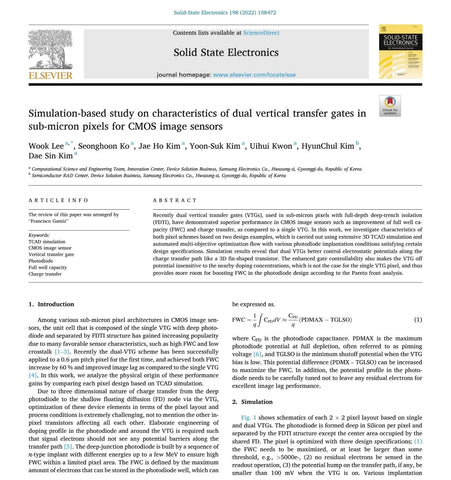
In a 22-year-long saga, a paper describing HP2's D-VTG technology appeared in the journal Solid State Electronics, published by Samsung. Dual Vertical Transfer Gate is a modification of the original design, in which two transmission gates TG are used in place of a single one and are positioned vertically concerning the photodiode PD.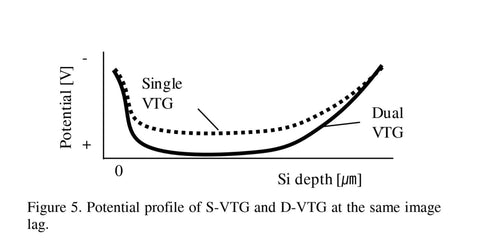
Because TG regulates the current through the device, D-VTG technology not only improves conduction efficiency but also boosts the allowable current through the PD by increasing the potential difference of the charge well.
High light suppression and dark signal-to-noise ratio benefit from a large FWC because it represents more extreme light input under sufficient light.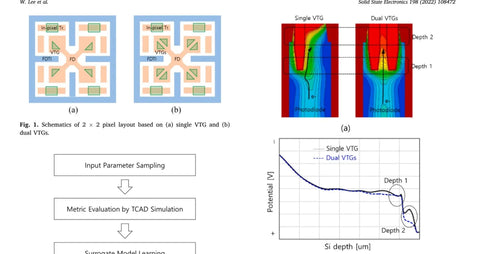
According to the paper, the maximum consumption has increased by a factor of 1.5 from the 6,000 electrons of a single pixel as initially designed by Samsung to the 9,000 electrons made possible by the new technology, which is more in line with the 33% increase currently advertised by HP2.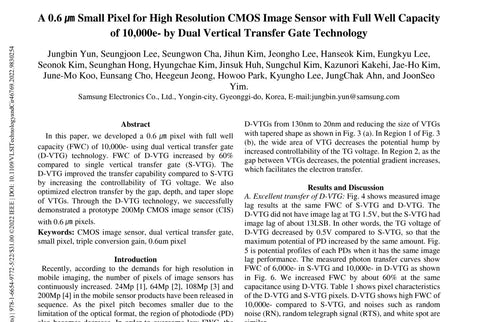
As reported in the most recent IEEE paper, the full well of an HP2 single pixel is 10,000 electrons. You should know that the A7R4/R5 has pixels that are an entire order of magnitude larger in size and that the full well contains only 36,000 electrons.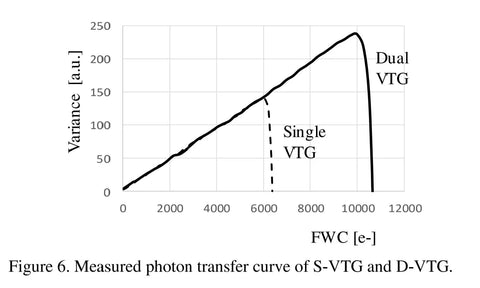
Gain from Two Slops
HP2 specifically called out DSG, or "Dual Slop Gain," as the HDR technology that will be used in the future. This phenomenon resembles a DCG, or dual conversion gain.
Samsung's "two different conversion values" refer to the readout capacitance of two FD regions: one large and one small.
The latter has a higher conversion gain because its capacitance is smaller.
"voltage converted into a unit of electron energy" (mV/e-) is the basis for the "Slope" in the propaganda. The conversion gain can be as a slope.
Samsung's IEEE paper notes that the FD area capacitor is switched to switch the conversion gain. It also boasts that three capacitors play a three-gain TCG. The current situation does not allow for the installation of the HP2.
Illustration in the form of a GIF
Focusing on approximately 200 million pixels,
In terms of mobile photography, the HP2 is unquestionably a step in the right direction. Samsung's decision to develop the HP2's sensor vertically gives it a fighting chance against 1-inch sensors, especially considering that most smartphones' tiny bottoms feature large apertures.
Having a high pixel count has its advantages as well. HP2's 200 million pixels are equivalent to 4-in-1 5000w pixels. It is divided into four grids for Quad PD focusing. It allows oblique and horizontal/vertical phase detection to work without the usual loss of pixels down each successive row in masked focus.
Comparing to Sony's 2x2ocl, Samsung's quad-core focusing has the advantage. Thanks to a wall in the small pixel, reduced crosstalk, and a setting that is more amenable to the algorithm's ability to restore finer details.
Conclusion:
HP2 is the best all-around CMOS for your main camera right now. Of course, mobile phone CMOS has much room for improvement, especially in terms of processing speed.
Since HP2's DSG function cannot be activated at 200mp, it is more accurately described as a 50mp four-in-one, with each small pixel having its own focus function. However, at 200 megapixels, the reading speed is only 15 frames per second, which is inadequate for smartphones with multiple apps open at once.
Compared to a standard inch, I don't anticipate mass-produced mobile phones having a larger bottom. The thickness of the lens group and the physical focal length constrains the extreme development of a mobile phone with a super-large base. The time has come to raise a fuss about CMOS from on high. This is the fundamental concept behind HP2.
Thanks to the Chinese contributor: zhiyuan
https://zhuanlan.zhihu.com/p/599790513?utm_psn=1599348675951759360&utm_id=0
Get the ultimate rugged protection with full body design and up to 21 feet drop proof here:
https://getcaseborne.com/collections/samsung-galaxy-s23-ultra-case
Or you should get it on Amazon: https://www.amazon.com/dp/B0BP1WL6LG?ref=myi_title_dp&th=1
